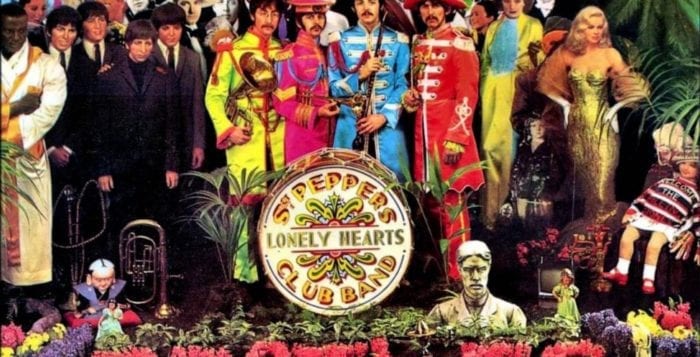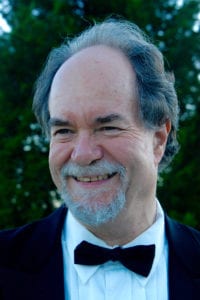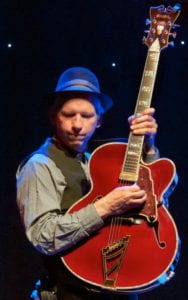By Norman Prusslin
Long Island radio listeners scanning the FM dial 40 years ago this coming Tuesday were surprised to hear musical stirrings on the 90.1 frequency that had previously offered static or sounds of distant stations. It was on Monday, June 27, 1977, at 5:30 p.m. that the Stony Brook University radio station joined the community of Long Island radio stations. I had the honor of coordinating the team that brought the station to the air that day and then went on to serve as the station’s general manager for 28 years.

Looking back on that first day of broadcasting, it is fascinating to think about how much the media landscape has changed over the past 40 years. In 1977, FM radio audience listening was just about ready to overtake the decades-old primacy of AM radio. Cable television on Long Island was in its formative years … CNN and MTV were still three and four years away, respectively. Music-oriented radio stations played vinyl on turntables while public service announcements aired on tape cartridges, and long-form public affairs programming was recorded on cassette and reel-to-reel audiotape.
How times have changed!
Through the compact disc and personal computer revolutions of the early 1980s to the web, streaming and digital download innovations of the 1990s to today’s multiple music distribution systems, WUSB has been at the forefront of marrying new technology with public service mission and responsibility.
The station was put to the test and earned its community service stripes eight months after sign on. Longtime North Shore residents will remember the crippling ice and snowstorms of February 1978. The Stony Brook campus was closed for a week. This was a time before wide cellphone use and way before the internet brought information to us, at a moment’s notice, anytime and anywhere.
WUSB was the main outlet in our area for getting critical safety information out to the community. Students and community volunteers slept in the studio to make sure the station provided a 24-hour service.
It was a crash course in local, person-to-person community radio programming. A lesson plan that has been used by the hundreds of student, staff, faculty, alumni and community volunteers who have sat in the on-air chair for 40 years.
Students covered the Shoreham nuclear power plant protests of the late 1970s live from the site. A radio play, “Shadow Over Long Island,” followed the template of “War of the Worlds” in focusing attention on the issue of nuclear power on Long Island while at the same time giving students a history lesson in producing “old time radio drama.”
WUSB received national attention (Time magazine and NBC News) when student staff produced and hosted the 1984 Alternative Presidential Convention on campus. While the two major party candidates, incumbent President Ronald Reagan and Walter Mondale did not attend, over 30 “legally qualified candidates” did providing the campus and local community with a day-long “teach in” of debate, conversation and organizing.
In the music industry, the late 1970s have been recognized as the time when the influence of college radio stations to introduce new and developing genres to radio listeners took hold. In the years before music video, satellite radio, Facebook, YouTube, iTunes, Pandora and Spotify, college radio was THE broadcast outpost for new music.
WUSB was the Long Island radio home for artists of all musical stripes. The music of major label and independent artists from the worlds of rock, folk, blues, classical, hip-hop, dance, traditional and more was being heard, often for the first time, by Long Islanders over 90.1 FM.
I am perhaps most proud of the role WUSB has had in developing an active local music scene and community. From hosting the first Long Island Contemporary Music Conference in the early 1980s to developing collaborative partnerships with area nonprofit music and arts organizations and concert clubs and venues of all sizes, WUSB’s status as a key player in the Long Island music community has brought recognition and honors to the university. It is therefore no surprise that the first meetings that led to the creation of the Long Island Music Hall of Fame in 2003 were held on campus.
This coming week, we celebrate 40 years of 24 hours/day noncommercial radio programming created by a volunteer staff of students, faculty, alumni and community members varied in background and political persuasion and perspective. It’s a time to recognize volunteers coming together for the common mission and purpose of presenting intelligent and thought-provoking dialogue, music from all corners of the globe and campus-focused programming via live sports coverage, academic colloquia and event announcements and coverage.
Now is no time to rest on past laurels. Earlier this year, the station moved into new studios in the West Side Dining Complex and added a second broadcast signal at 107.3 FM to better increase service coverage to North Shore communities. On June 27, 1977, at 5:30 p.m., founding members of the WUSB station staff coined the expression “….the experiment continues.”
40 years on, it still does!
Norman Prusslin is director of the media arts minor at Stony Brook University. He is WUSB-FM’s founding general manager serving in that position until 2006 and continues his association with the station as its faculty adviser.










